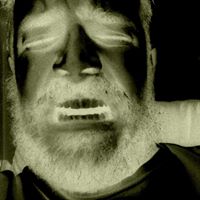Daniel Neal Prater
age ~50
from Muncie, IN
- Also known as:
-
- Daniel N Prater
- Daniel L Prater
- David Neal Prater
- David N Prater
- Daniel N Lee
- Phone and address:
-
6613 Jackson St, Muncie, IN 47304
(765)7596898
Daniel Prater Phones & Addresses
- 6613 Jackson St, Muncie, IN 47304 • (765)7596898
- Lakeland, FL
- 1666 Da Vinci Ct APT 111, Davis, CA 95618
- 775 Lockefield St, Indianapolis, IN 46202 • (317)9170159
- Beavercreek, OH
- West Lafayette, IN
Isbn (Books And Publications)


Us Patents
-
Banking Account And Transaction Methods
view source -
US Patent:20090043663, Feb 12, 2009
-
Filed:Aug 7, 2008
-
Appl. No.:12/187611
-
Inventors:Daniel N. Prater - Indianapolis IN, US
-
International Classification:G06Q 40/00
G06Q 20/00
G06Q 10/00 -
US Classification:705 16, 705 44, 705 30, 705 33
-
Abstract:A transaction account, system and method for combining a debit card with a credit card. The method provides for executing a transaction, including the steps of: maintaining a financial account associated with a transaction device for the execution of purchases, the account having a credit limit and an account balance indicative of an aggregate sum of previously authorized debits and credits; a periodic or intermittent source of funding to the account; receiving a request for authorization for a new transaction amount against the account in exchange for goods or services; and authorizing the requested transaction amount when the sum of the credit limit and the account balance exceeds the transaction amount. The proposed methods additionally may incorporate methods for the reporting of the account balance aggregate sum of debits and credits to the account holder. Methods involved in operatively administering the aggregate sum of debits and credits account balance will typically be hidden from the account holder resulting in the account holder having the experience of holding a single account capable of carrying both positive and negative balances, wherein negative balances may be charged interest, and positive balances may result in the accumulation of interest payments to the account from the issuer.
-
Diagnostics And Therapeutics Based On Circulating Progenitor Cells
view source -
US Patent:20100203058, Aug 12, 2010
-
Filed:Feb 11, 2010
-
Appl. No.:12/704275
-
Inventors:David A. Ingram - Indianapolis IN, US
Myka L. Estes - Indianapolis IN, US
Daniel L. Prater - Indianapolis IN, US
Laura E. Mead - Indianapolis IN, US -
Assignee:Indiana University Research and Technology Corporation - Indianapolis IN
-
International Classification:A61K 39/395
C12Q 1/02 -
US Classification:4241411, 435 29
-
Abstract:Methods and compositions for detection, diagnosis, and therapeutics of arterial diseases based on pro-angiogenic and non-angiogenic circulating hematopoietic stem and progenitor cells (CHSPCs) and circulation endothelial colony forming cells (ECFCs) are described.
-
Blood Vessel Formation From Endothelial Colony Forming Cells
view source -
US Patent:20080025956, Jan 31, 2008
-
Filed:Aug 13, 2007
-
Appl. No.:11/837999
-
Inventors:Mervin Yoder - Indianapolis IN, US
David Ingram - Indianapolis IN, US
Daniel Prater - Fishers IN, US -
Assignee:Indiana University Research and Technology Corporation - Indianapolis IN
-
International Classification:A61K 35/12
A61P 9/00
C12N 5/02
C12N 5/08 -
US Classification:424093700, 435325000, 435402000
-
Abstract:Methods and compositions to form fully functional blood vessels in vivo using endothelial colony forming cells (ECFCs) are disclosed. Culturing ECFCs in a support material results in association of ECFCs in vitro and formation of blood vessels in vivo upon implantation. Direct administration of cultured ECFCs form blood vessels in vivo. Formation of blood vessels is useful in treating a variety of medical conditions including ischemia and hypoxia.
-
Magnetohydrodynamic Helicity And Laminar Flow Kinematic Dynamo Generators
view source -
US Patent:20230107844, Apr 6, 2023
-
Filed:Oct 5, 2022
-
Appl. No.:17/960662
-
Inventors:Daniel Prater - Noblesville IN, US
-
International Classification:H02K 44/10
H02K 44/08
H02K 44/12 -
Abstract:Described are toroidal devices to produce steady state, helical, Taylor-Couette-like magnetohydrodynamic singular structure flows in plasma or other conductive fluids with full magnetohydrodynamic helicity. Linking of two or more such toroidal devices can be used to generate a laminar kinematic dynamo. Only one is required to confine plasma at the pressures and for times required to produce nuclear fusion. Such high-temperature plasma can also be used for centrifugal ionic separation, nuclear transmutations at production quantity, and in the near term as a study tool in the development of materials to withstand high temperature and neutron flux. Plasma is a high-energy state of matter capable of relativistic velocity en masse, and as such, relativistic plasma or other conductive fluid devices are a means to generate gravity.
-
Plasma Confinement Device With Helical Current And Fluid Flow
view source -
US Patent:20200234832, Jul 23, 2020
-
Filed:Jan 21, 2020
-
Appl. No.:16/748797
-
Inventors:Daniel Prater - Noblesville IN, US
-
International Classification:G21B 1/05
H05H 1/10
G21B 1/11 -
Abstract:A device and method for generating plasma conditions for deuterium-tritium and advanced fuel thermonuclear fusion consisting of an inner helicity-containing plasma such as a spheromak compact toroid bounded by a plurality of outer cusped magnetic fields. Helicity driven by steady-inductive helicity injectors energizes the plasmoid with helicity. The device further includes means for driving fluid rotation about the device axis, about the device magnetic axis, and means for a hot electron sheath. Means are also provided for reducing particle losses out through the open cusp field lines through helicity injector rectification.
-
Device And Method For The Heating And Confinement Of Plasma
view source -
US Patent:20180063936, Mar 1, 2018
-
Filed:Aug 25, 2017
-
Appl. No.:15/686821
-
Inventors:Daniel Prater - Muncie IN, US
-
International Classification:H05H 1/11
-
Abstract:A device and method for the heating of plasma by resonance using Halbach transformers for magnetic field modulation. Forming the Halbach transformers of heating to the primary magnetic field coils of confinement in a typical ring cusp confinement device configuration may reduce high-voltage breakdown along coil supports. By heating the plasma transverse to the confinement field a greater number of particle species may be retained. The primary confinement field coil support is placed outboard of the plasma cusp region by extending lobed flanges from the plates of Bitter-type primary electromagnetic field coils into the outboard region and placing the holes for the coil supports through these flanges. This arrangement of coil and flange moves plasma bombardment from the cusp region to the outboard region thus moving impurity generation by coil support bombardment from the cusp region to an outer radius where impurity effects are less detrimental.
-
Plasma Confinement Device
view source -
US Patent:20160037617, Feb 4, 2016
-
Filed:Oct 9, 2015
-
Appl. No.:14/879929
-
Inventors:Daniel Prater - Noblesville IN, US
-
International Classification:H05H 1/11
H05H 1/03
H05H 1/16 -
Abstract:A device and method for the magnetic confinement of plasma is formed by a cylindrically stacked column of current-carrying magnetic field coils with electrodes interior to each magnetic field coil so as to induce plasma fluid rotation about an annular confinement region formed of cusped-geometry magnetic fields. Electrodes are formed such that the electric fields produced are tangential to the magnetic fields, and so as to maintain consistent azimuthal direction of plasma rotation, electric field electrodes alternate accordingly in polarity along the axial length of the device.
-
Plasma Confinement Device
view source -
US Patent:20150097487, Apr 9, 2015
-
Filed:Oct 3, 2014
-
Appl. No.:14/505864
-
Inventors:Daniel Prater - Muncie IN, US
-
International Classification:H05H 1/16
-
US Classification:31511171
-
Abstract:A device and method for magnetic field confinement of plasma is formed by a cylindrically stacked column of direct current-carrying magnetic field coils with electrodes adjacently interior to each magnetic field coils so as to induce plasma rotation about an annular confinement region. Each field coil produces a magnetic field alternating in direction relative to adjacent coils and, so as to maintain consistent overall azimuthal direction of plasma rotation, electric field electrodes alternate accordingly in polarity along the axial length of the device. The device may be used for inducing nuclear fusion, for the ionic or isotopic separation of elements, creation of thrust by ejecting mass along the axial direction of the device, for creating a gravitational acceleration field, and for creating a state change beyond plasma.
Name / Title
Company / Classification
Phones & Addresses
SKETCH BY NUMBER, INC
Resumes

Unaffiliated
view sourceLocation:
2550 Yeager Rd west, Lafayette, IN 47906
Industry:
Research
Work:
University of California, San Diego Mar 2017 - Nov 2017
Research Assistant
Sabbatical Dec 2012 - Mar 2017
Private
Toratomics Dec 2012 - Mar 2017
Manager
Uc Davis Jun 2008 - Jul 2012
Research Associate Iii
Indiana University School of Medicine Feb 2003 - Jun 2008
Research Associate Ii
Research Assistant
Sabbatical Dec 2012 - Mar 2017
Private
Toratomics Dec 2012 - Mar 2017
Manager
Uc Davis Jun 2008 - Jul 2012
Research Associate Iii
Indiana University School of Medicine Feb 2003 - Jun 2008
Research Associate Ii
Education:
Indiana University–Purdue University Indianapolis 2002 - 2004
Master of Science, Masters, Physiology Purdue University 2000 - 2002
Master of Science, Masters, Aerospace Engineering Ball State University 1993 - 2000
Bachelors, Bachelor of Science, Physics, Chemistry
Master of Science, Masters, Physiology Purdue University 2000 - 2002
Master of Science, Masters, Aerospace Engineering Ball State University 1993 - 2000
Bachelors, Bachelor of Science, Physics, Chemistry
Skills:
Biotechnology
Cell
Statistics
Flow Cytometry
Microscopy
Research
Experimental Design
Analysis
Immunology
Fuel Cells
Tissue Engineering
Plasma Physics
Multi Color Flow Cytometry
Organic Farming
Electrochemistry
Cell Biology
Chemistry
Physics
Science
Cell
Statistics
Flow Cytometry
Microscopy
Research
Experimental Design
Analysis
Immunology
Fuel Cells
Tissue Engineering
Plasma Physics
Multi Color Flow Cytometry
Organic Farming
Electrochemistry
Cell Biology
Chemistry
Physics
Science

Daniel Prater
view source
Daniel Prater
view source
Daniel Prater
view sourceLocation:
United States
Youtube

Daniel Prater
view source
Daniel Prater
view source
Daniel Prater
view source
Daniel Prater
view source
Daniel Prater
view source
Daniel Dewayne Prater
view source
Daniel Prater
view source
Daniel Prater
view sourceClassmates

Daniel Prater
view sourceSchools:
St. John the Baptist School St. Louis MO 1969-1975
Community:
Lynn Ewy, Cormac Dedert, Tony Zeman, Terry Eads, Jeannie Jeannie, Jon Harris, Sheila Brawley, Karen Esswein, Sally Hanson, William Dunn, Margie Hartley

Daniel Prater, Clay High ...
view source
Dan Prater, Ryan Elementa...
view source
Dan Prater, Hazel Green A...
view source
Dan Prater, Wabash High S...
view source
Clay High School, Oregon,...
view sourceGraduates:
Daniel Prater (1977-1981),
Deborah Wells (1967-1971),
Daniel Jeffries (1987-1991)
Deborah Wells (1967-1971),
Daniel Jeffries (1987-1991)

Bronson Junior Senior Hig...
view sourceGraduates:
Dan Prater (1975-1979),
Patricia Hicks (1967-1971),
Genie Bassage (1959-1963),
Earnest Everidge (1972-1976),
Dale Disbro (1988-1992),
Dan Harkness (1975-1979)
Patricia Hicks (1967-1971),
Genie Bassage (1959-1963),
Earnest Everidge (1972-1976),
Dale Disbro (1988-1992),
Dan Harkness (1975-1979)

Wabash High School, Wabas...
view sourceGraduates:
Dan Prater (1970-1974),
Becky Holley (1975-1979),
Darrell Watson (1974-1978),
Pete Melzoni (1979-1983),
Sarah Copeland (1999-2003)
Becky Holley (1975-1979),
Darrell Watson (1974-1978),
Pete Melzoni (1979-1983),
Sarah Copeland (1999-2003)
Flickr
Googleplus

Daniel Prater
Work:
Daniel K. Prater - Author

Daniel Prater
Relationship:
Married

Daniel Prater

Daniel Prater

Daniel Prater

Daniel Prater

Daniel Prater
Get Report for Daniel Neal Prater from Muncie, IN, age ~50












